1962 Ferrari 400 Superamerica SWB Coupe Aerodinamico
Driving Enzo’s car of choice, the luxury 400 Superamerica. The luxury supercar that was Enzo's favourite. Enzo Ferrari famously built road cars only to pay for racing. But then he built a road car so luxurious it became his personal choice of transport. Matthew Hayward drives the Ferrari 400 Superamerica Aerodinamico.
Photography Tom Shaxson
FERRARI 400 SUPERAMERICA
I have never wanted to be driving to the French Riviera more than I do right now. If any Ferrari was envisioned to get you there quickly, comfortably and in unrivalled style it was the 400 Superamerica. The Oxfordshire countryside will have to do for today, though, providing plenty of picturesque scenery to explore and enjoy what was once the jewel in Ferrari s crown.
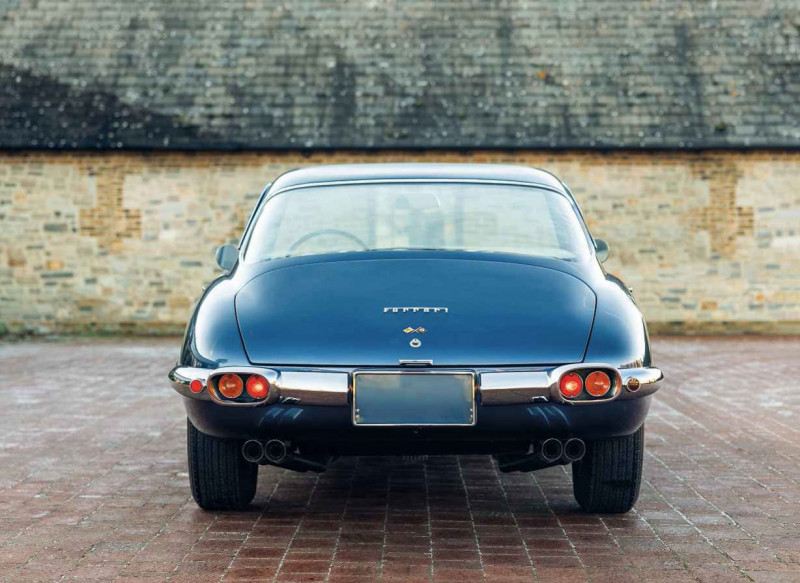
This SWB Coupe Aerodinamico in particular is almost painfully beautiful. ‘It’s built like a Rolls-Royce, but has the performance of a Ferrari… and the rarity of a Picasso,’ jokes Max Girardo, who is currently selling this gorgeous car on behalf of its most recent owner. The Superamerica represents the pinnacle of what Ferrari could achieve at the time, as it wanted to pursue the top-tier grand tourer market — proving that the marque was about more than merely the greatest competition cars.
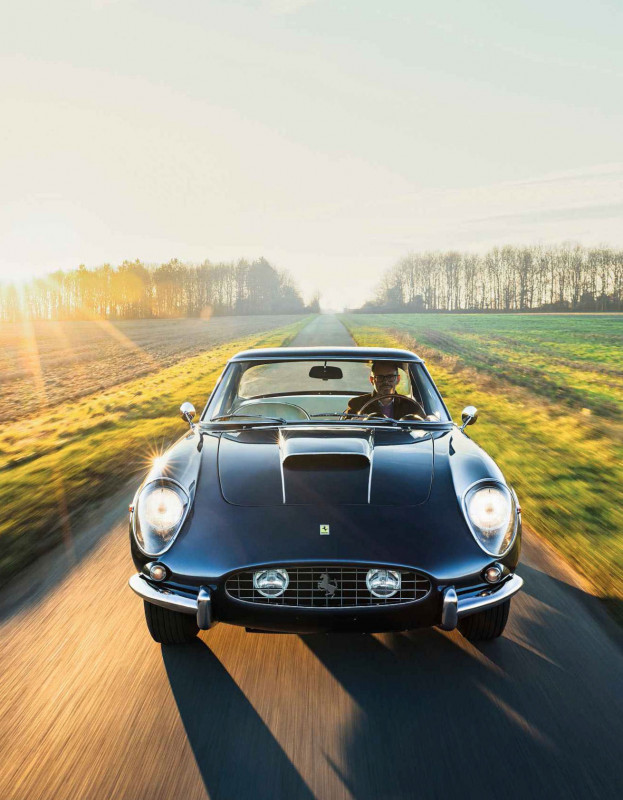
It’s certainly a far cry from the rawness of, say, a 275 GTB/4, and some of the exquisite detailing — such as the rear bumper-mounted lights and the intricate doorhandles — really elevate it to a higher level. Under the bonnet is the largest-capacity Colombo V12 engine ever fitted to a Ferrari, measuring 4.0 litres. To truly put this car into perspective, consider that the 400 Superamerica would have been more expensive than a 250 GTO when it was new, and each owner was, in effect, vetted by Enzo himself.
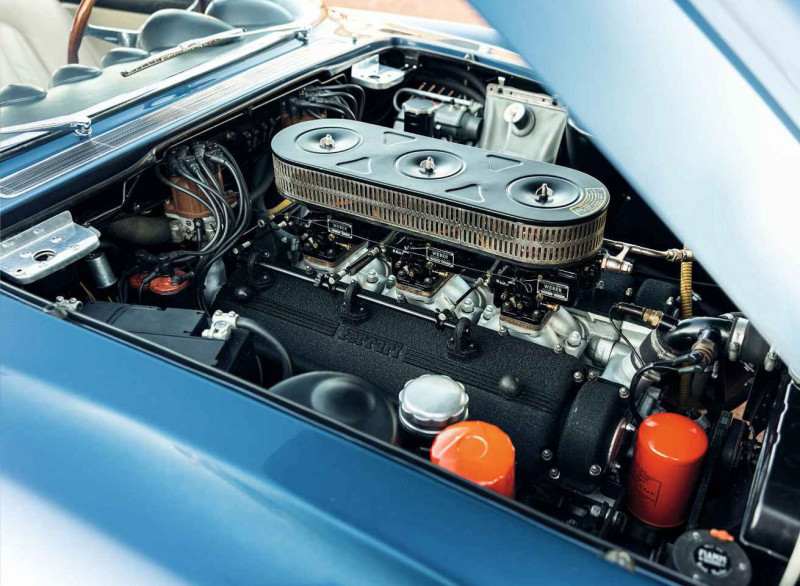
The concept of a luxury-focused Ferrari flagship first came about in the early 1950s, with highly limitedproduction models such as the 340, 342 and 375 America, which combined race-derived engines and chassis with coachbuilt bodies. It wasn’t until the 410 Superamerica in 1955 that the formula was refined. With a huge 5.0-litre version of the long-block Lampredi V12 providing up to 360bhp, and a range of different Italian coachbuilt bodies, this was a super-GT for the most wealthy and discerning buyers. As the name suggests, it was squarely aimed at the prosperous US market although, with only 35 built over four years, it really was the preserve of the super-rich.
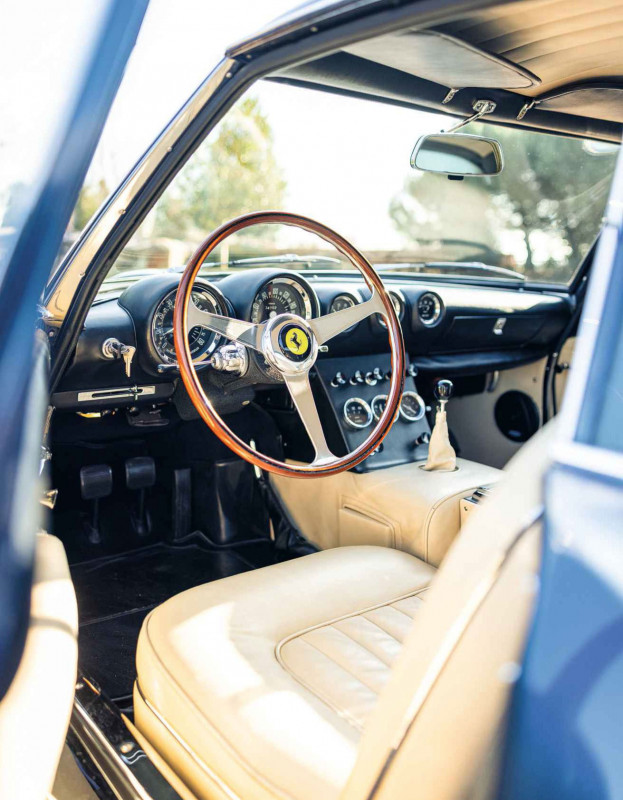
Continuing very much in this spirit, the 400 Superamerica was launched in 1959 as the culmination of all the best ingredients Ferrari could throw at it. The ageing Lampredi engine was dropped in favour of a stretched version of the 250’s 3.0-litre Colombo VI2 — which, although physically smaller, was every bit as powerful. This single-cam variant was enlarged to 4.0 litres by increasing both bore and stroke, a twin coil and distributor set-up was installed, and a trio of Weber 46 DCF3 carburettors provided fuel and air.
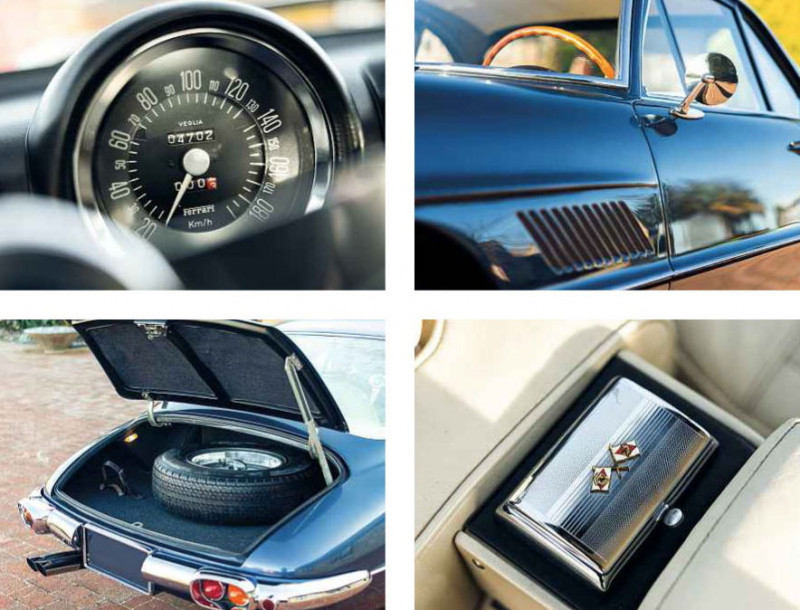
It received four-wheel disc brakes, a first for any Ferrari road car, and was offered in both short- and long-wheelbase options, the latter for those requiring more interior space. The chassis was very similar in construction to that of the 250, with independent double-wishbone front suspension and a live rear axle, supported by semi-elliptic leaf springs and controlled by radius arms.
A total of 46 400 Superamericas were constructed between 1959 and 1964, all but the two Scaglietti Spydersbodied by Pininfarina. Notable owners include the Aga Khan and Fiat overlord Gianni Agnelli — not to mention the fact that it was Enzo’s personal car of choice. This 400 Superamerica SWB Coupe Aerodinamico, one of only eight built in closed-headlamp form, is arguably of the most desirable type.

Originally delivered to a US-based owner via Chinetti Motors in 1962, it was specified in Blu Sera Italver with a Blu Connolly hide interior. CO Marshall Jr of Toledo, Ohio, ran ‘3559 SA for some six years, entering it into the fifth Annual Ferrari Club of America meeting, where it was awarded the Judges Choice trophy. By 1968, it had returned to Chinetti for a new exhaust system and 16,000-mile engine overhaul, before being listed for sale. Marshall clearly had a change of heart, or struggled to find a buyer, as it didn’t find its next owner until 1972 and was showing 23,000 miles.
That new owner was Michael Kerr of Carrollton, Texas, who entrusted official Ferrari dealership FAF Motorcars of Tucker, Georgia, to service and maintain it. Early on, he decided that a colour change to red was necessary, also adding a sunroof and changing the interior to pale cream leather at the same time. Kerr kept the Superamerica for almost two decades, before it was exported to Switzerland and offered for sale by Graber Automobile in 1989.
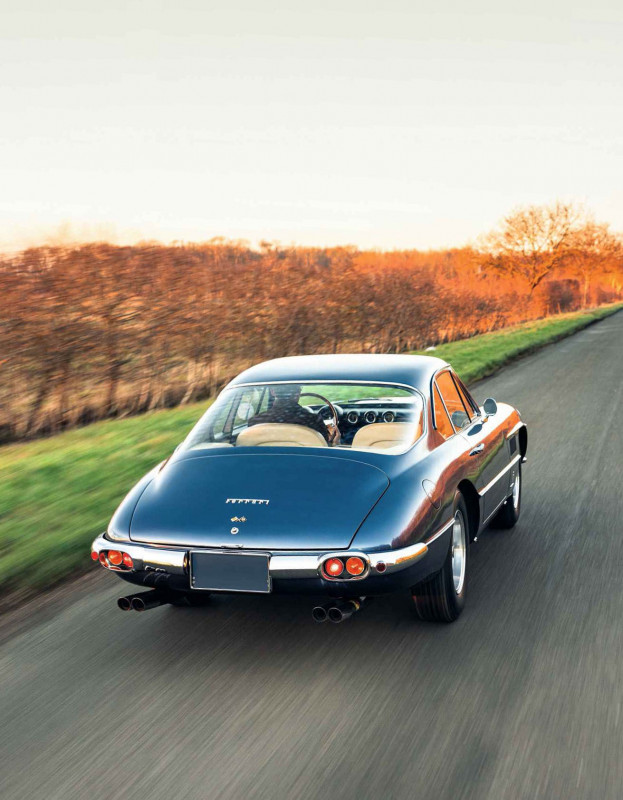
After passing through its next owner relatively quickly, it was then bought by Arnold and Werner Meier in October 1989. It was sent to Edi Wyss Engineering in Zurich in 1993, which completed
a full restoration, including a repaint in the original blue and removal of the sunroof. Meier opted to retain the pale cream interior, and then entered the car in various international events — including Pebble Beach, the 50th Anniversary meeting of Ferrari in Italy, and the 32nd Ferrari Club of America Annual Meeting.
The Superamerica was sold back to a US collector in 2003, after which it made an appearance in the XIV Cavallino Classic in 2005. After being inspected and documented by Ferrari historian Marcel Massini, it was sold in 2011 via RM Auctions in Monterey to racing driver Skip Barber for $2,090,000. Barber planned to get the car up to Platinum Award standard for the next Cavallino Classic, and sent it straight to specialist Greg Jones for the work required.
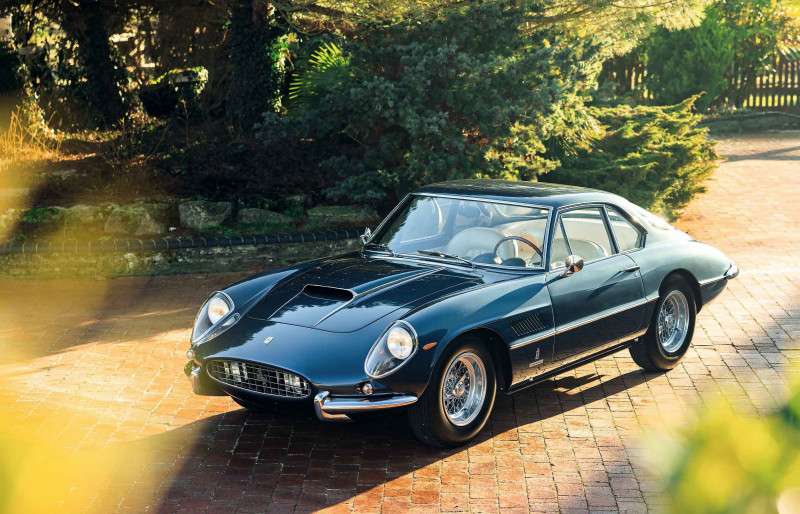
Barber got his wish when the car returned to The Breakers in 2012, winning the Class 10, Speciale/SF/SA Platinum trophy. In the meantime, this wonderful specimen also gained Ferrari Classiche ‘red book’ certification, confirming that it has full matching-numbers status. It was then sold to the current UK-based owner at RM’s 2013 Villa d’Este sale for €2,184,000. Quite a history, and one that’s all the more unusual for being complete and unbroken.
As we finish admiring the details — it’s a car you could happily stare at all day — I’m keen to figure out exactly what this car wants to be. Perhaps more so than any other Ferrari of its era, this Superamerica feels like a seriously beautifully built car. Even the sound of the door as it latches shut is a satisfying clunk. It certainly ticks the luxury box.
This is a short-wheelbase model, so the cabin feels snug. Once you’re seated it envelops you, although there’s actually decent length in the footwell. The boot is mostly taken up by the spare wheel, and luggage goes in the space behind the seats. That’s one point for the GT category.
Twist the key, fire the starter and the magnificent powerplant erupts into life. There’s no disguising its pedigree, but there’s something slightly different about the way this piece of exquisite engineering makes its presence felt. The idle is deeper, less unruly than some of the racier Colombos I’ve encountered. The throttle feels resistant initially, but push through and the engine responds with an instant ferocity that almost catches me off guard. That’s definitely a thinly veiled racing V12 under the bonnet.
Although there’s a reasonable heft to the clutch, I can’t help but think that the Superamerica is actually pretty friendly to drive at low speed. The engine’s immense torque is immediately noticeable, which makes manoeuvring and pulling away surprisingly easy. We head straight out onto some wide, fast and flowing roads, putting the car right in its element.
Despite the substantial chassis and sizeable engine, the Ferrari weighs a comparatively light 1250kg and feels matchingly lithe, which means getting up to speed requires very little effort. Tall-ish gearing feels appropriate and works well, with third gear providing plenty of pull from around 40mph and on, well into triple figures. Changing into top at motorway speeds gives you ample scope for cruising.
Steering this pristine concours-winner through the tighter lanes will focus the mind, but there’s a surprising amount of feedback coming up through the thin, woodrimmed steering wheel, and the accurate feel provided by the unassisted set-up helps to make light work of positioning the Superamerica on the roads. Sure, it feels more at home on the faster-flowing sections, but its compact proportions mean that it’s not overly intimidating.
At lower speeds the suspension has a reassuring firmness to it, without ever feeling uncomfortable. It soaks up smaller lumps without any complaint; larger ruts and undulations are no cause for concern, but it’s above 50mph that the ride really seems to settle, allowing the Superamerica to breathe with the surface. It always remains at the sportier end of comfortable, but not to the point that it would feel jarring or even annoying on longer journeys, yet the low weight helps to keep the car feeling nimble, too, while the brakes
inspire confidence and feel progressive, thanks to a firm pedal. You could easily imagine driving a long way in this car.
Even after a lengthy drive, it feels like our time with the Superamerica is coming to an end all too soon. Then we spot a glorious stretch of wide, straight road — it would be rude not to clear its throat a little more. With a small blip from third gear down to second, I can almost hear each of the 12 cylinders dancing with joy at the prospect of more revs.
The 4.0-litre Colombo seems perfectly happy cruising but it becomes a different animal when pushed beyond 4000rpm. I shift up to third somewhere north of 5500rpm: this road is not going to be long enough to fully explore its performance at the frantic top end of the rev range. Peak power is delivered at 7000rpm and, if you hold on to fourth gear long enough, the Superamerica is good for 160mph. That’s Ferrari s claim, and I see no reason to doubt it.
The Superamerica demonstrates such an interesting mix of abilities that it’s a curious car to get to grips with. Girardo sums it up: ‘I think nobody ever appreciates the build quality of these cars, which is phenomenal. It’s all handmade, there was no cutting of corners. It has the best technology that Ferrari had at the time, with disc brakes, independent front suspension, overdrive and so on, but it also has the robustness of a Colombo engine, which never goes wrong, the gearboxes are really good, and the chassis is indestructible.’
In terms of rarity though, Ferraris don’t come much more exclusive, and I can’t help but feel that the 400 Superamerica has been overlooked — which is strange, when other Ferraris are noted because of their tiny numbers. Perhaps it’s the lack of any direct motorsport connection that keeps the Superamerica something of a mystery to all but the most distinguished collectors. Girardo comments: ‘As crazy as it sounds, it’s just not a lot of money for how special the car is.’
And what is that figure? Today, somewhere north of £3million. Why not even more? ‘Not enough of these are out there for everyone to know what they are,’ suggests Girardo. ‘The good thing about McLaren F1s or 250 GTOs is that one sells every year or 24 months. And then everyone talks about it, and then the next guy knows that when he goes to buy one he’s got to pay a bit more. But there are so few of these, and they are with such good collectors, that they just don’t sell very often. You don’t get as much momentum because you don’t see them coming to market.’
I haven’t yet handed the keys back, and I have time available. The Riviera really isn’t so far away, not when you have a car like the Superamerica at your disposal. Is now a good time, Mr Elliott, for me to ask about a pay rise?
THANKS TO Girardo & Co, girardo.com
TECHNICAL DATA 1962 Ferrari 400 Superamerica SWB Coupe Aerodinamico
- Engine 3967cc V12, OHC per bank, triple Weber 46 DCF3 carburettors
- Max Power 340bhp @ 7000rpm
- Max Torque 304lb ft @ 4000rpm
- Transmission Four-speed manual plus overdrive, rear-wheel drive
- Steering Worm and roller
- Suspension Front: unequal-length wishbones, coil springs, telescopic dampers, anti-roll bar. Rear: live axle, twin radius arms, semi-elliptic leaf springs, co-axial springs, telescopic dampers
- Brakes All Discs
- Acceleration 0-62mph 9.2sec
- Top speed 160mph
- Weight 1250kg (dry)
'NOTABLE OWNERS INCLUDE THE AGA KHAN AND GIANNI AGNELLI - AND IT WAS ENZO’S PERSONAL CAR OF CHOICE’
Above left, and right - Delicate detailing abounds, lifting this Ferrari above the herd; closed headlamps mark this ‘Aerodinamico’ out as one of only eight.



Creating demand — or frenzied desperation — by telling people they can’t have something is not the modem sales technique that it is often portrayed as. Sure, watch, yacht and ‘luxury goods’ companies have perfected the technique of Obscene Pricing Demand Creation post-millennium, but anyone who has ever raised kids will tell you that the basic psychology behind it is as old as the hills. Guess what: it works in reverse, too. Even in the business world, it goes back to the invention of conspicuous wealth and with it the emergence of enterprising souls who would generously provide succour for those who had so much money that they didn’t know what to do with it.
Enzo Ferrari was the master of that. Just as Mike Salmon’s famously snobby dismissiveness of potential customers converted many a wavering visitor to Maranello Concessionaires, Enzo sometimes made it very difficult to buy his cars. The ploy didn’t work on everyone, of course — to which we owe the existence of Lamborghini — but personally vetting potential owners to his incredibly expensive range-topping 400 Superamerica was a stroke of genius. No wonder it made the cars as coveted then as they are cherished now. And rightly so: maybe the true measure of a model’s greatness is how seldom examples come to market.
You can’t accuse Ford of adopting the same technique with its more celebrated supermarket approach to shifting units. Even so, coming from an era when more ‘experimental’ models such as the Probe and Cougar were brutally shunned by buyers, the Puma in original 1.7-litre form (the Racing doesn’t have the same effortless innocence) rapidly won petrolhead hearts and minds. Hard to believe that this sublime three-door coupe has reached the quarter-century, but it was wonderful to reunite designer Ian Callum with his baby.
Then, as a timely reminder to Puma fans that greatness will shine through regardless of origins, badge, even sales psychology, someone paid just shy of £600,000 for a Ford. Admittedly, it was a one-of-500 RS500 (there were 5545 Sierra Cosworths overall) and as good an example as you are likely to find, but even so...
Obviously that price was insane, especially against an estimate of £120,000-180,000 at the Silverstone Auctions Race Retro sale, but remember it takes two people (or more) to bid a car up at auction and that means there is at least one other person out there who was prepared to spend one bid less than £590,500 on such a car.
You can count on seeing a lot more RS500s coming to market very soon.